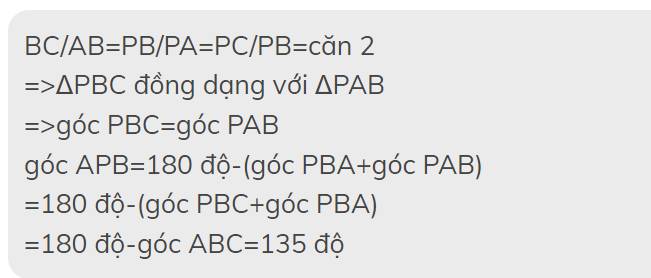
Hãy nhập câu hỏi của bạn vào đây, nếu là tài khoản VIP, bạn sẽ được ưu tiên trả lời.


f) \(\dfrac{-x}{3}=2\dfrac{1}{7}\div\dfrac{5}{7}\)
\(\dfrac{-x}{3}=\dfrac{15}{7}\div\dfrac{5}{7}\)
\(\dfrac{-x}{3}=3\)
\(-x=3\cdot3\)
\(-x=9\)
\(x=-9\)
g) \(\dfrac{5}{4}+\dfrac{1}{4}\div x=1\dfrac{3}{8}\)
\(\dfrac{5}{4}+\dfrac{1}{4}\div x=\dfrac{11}{8}\)
\(\dfrac{1}{4}\div x=\dfrac{11}{8}-\dfrac{5}{4}\)
\(\dfrac{1}{4}\div x=\dfrac{1}{8}\)
\(x=\dfrac{1}{4}\div\dfrac{1}{8}\)
\(x=2\)

TK :
5x + 5x +2 = 650
5x + 5x . 52 = 650
5x .( 1 +25 ) = 650
5x .26 = 650
5x = 650 / 26 =25
5x = 52
nên x=2


\(\dfrac{-7}{x+1}=\dfrac{6}{x+27}\)
\(\Rightarrow-7x-189=6x+6\)
\(\Rightarrow-7x-6x=6+189\)
\(\Rightarrow-13x=195\)
\(\Rightarrow x=-15\)
Vay x = -15


Lời giải:
Gọi $d=ƯCLN(3n+2, 2n+3)$
$\Rightarrow 3n+2\vdots d; 2n+3\vdots d$
$\Rightarrow 3(2n+3)-2(3n+2)\vdots d$
$\Rightarrow 5\vdots d$
$\Rightarrow d=1$ hoặc $d=5$.
Để ps đã cho là tối giản thì $d\neq 5$. Nghĩa là $2n+3\not\vdots 5$
$\Rightarrow 2n-2\not\vdots 5$
$\Rightarrow 2(n-1)\not\vdots 5$
$\Rightarrow n-1\not\vdots 5$
$\Rightarrow n\neq 5k+1$ với $k$ tự nhiên.




`2/3 . 6/9+25/54:5/6`
`=2/3 . 2/3+25/54 . 6/5`
`=4/9+5/9=9/9=1`
\(\dfrac{2}{3}\cdot\dfrac{6}{9}+\dfrac{25}{54}:\dfrac{5}{6}=\dfrac{4}{9}+\dfrac{5}{9}=\dfrac{9}{9}=1\)